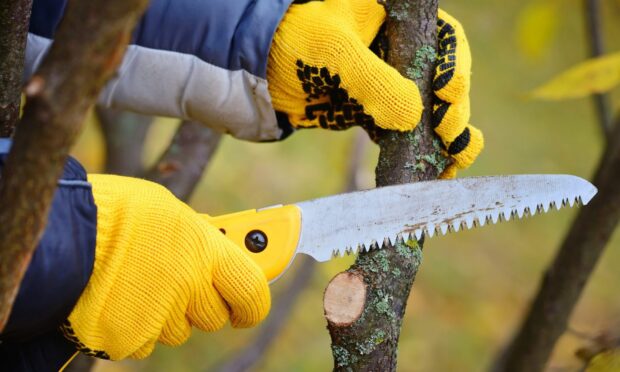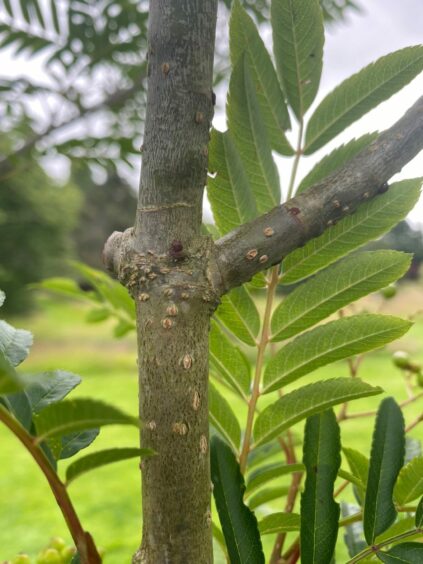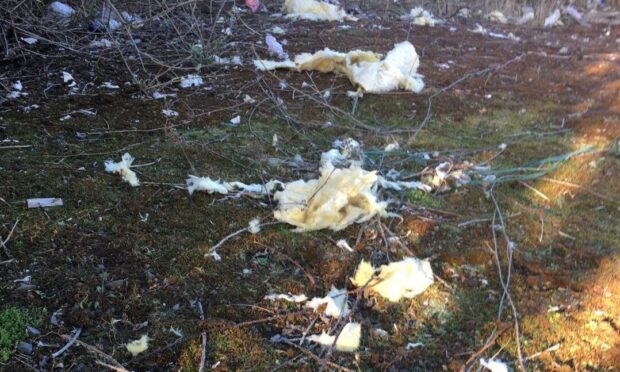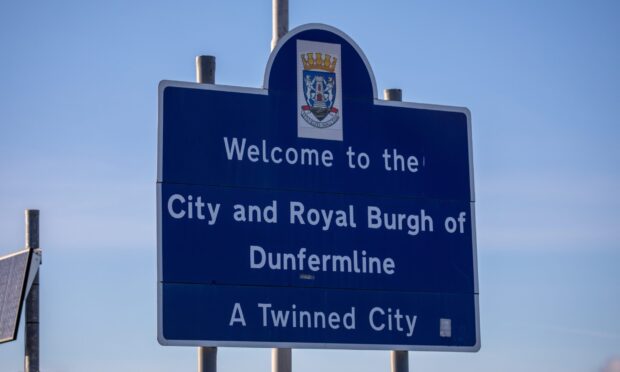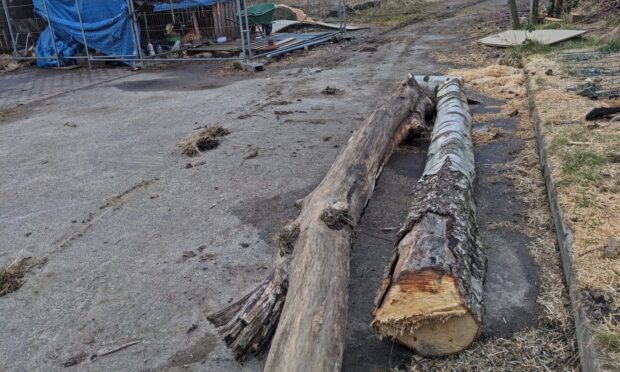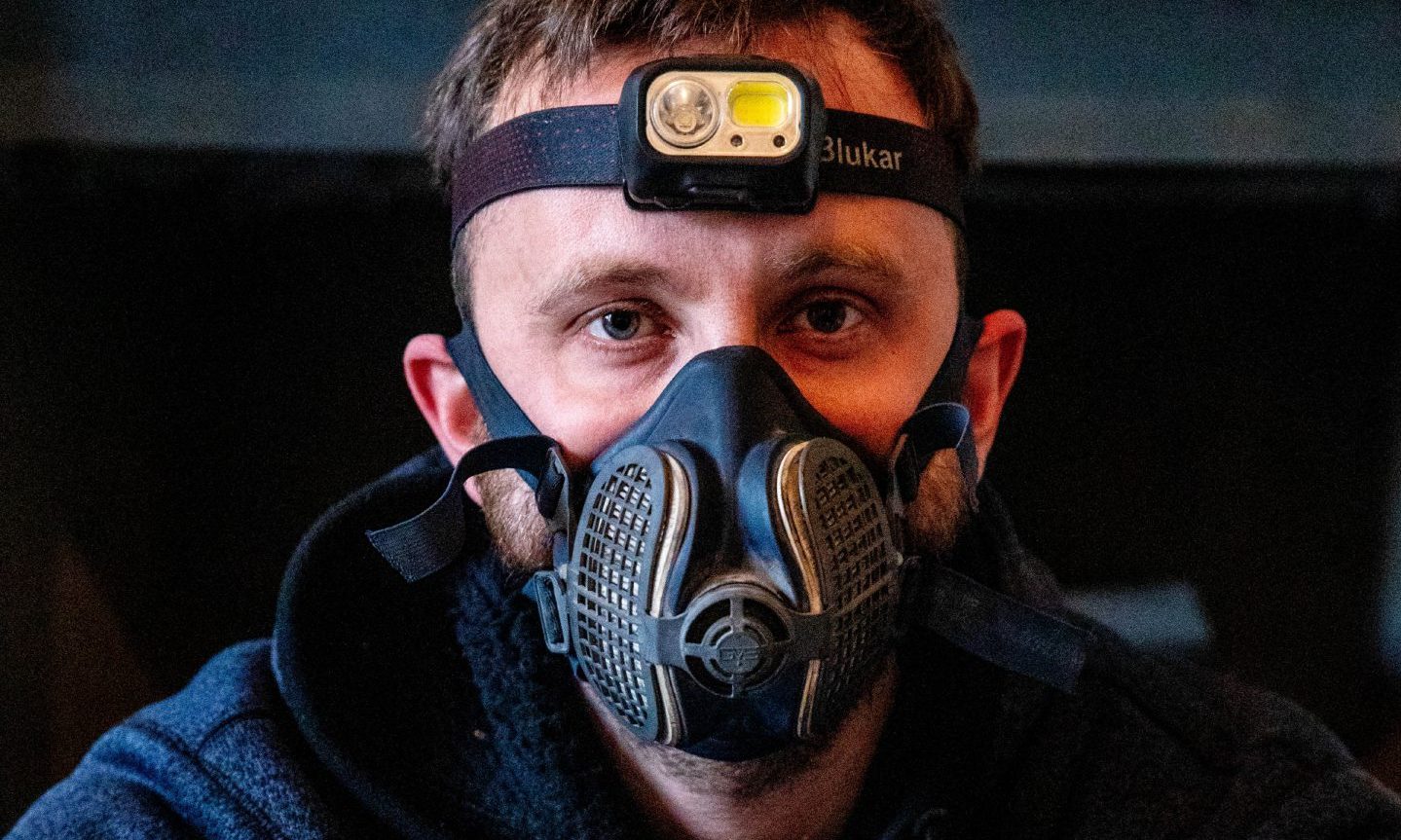I wonder how many gardeners in the years after planting a tree would think about carrying out formative pruning like you would do say on a young rose plant or shrub?
If you gaze up at the crown of a mature tree to see a mass of branches and leaves, I’m not sure that it is something you would automatically think to do.
But a little work with a pair of secateurs in the early years of a trees life can help reduce the chances of it failing when mature.
Planting of a mountain ash
Three years ago I planted a young mountain ash tree Sorbus ‘Joseph Rock’, just one of the many rowan trees that are ideally suited for our Scottish gardens.
Indeed a few years ago on Beechgrove Garden, myself and the other presenters all selected a tree suitable for a smaller garden where Carole Baxter chose the compact rowan S.vilmorinii.
As a garden plant I find them great value for money with interest spread over many months of the year.
What’s so good about rowan trees?
In mid-spring the tree is covered in masses of tiny, creamy-white flowers during May and June.
As the leaves are small and pinnate (leaflets arranged in two rows either side of a midrib like a feather), not only does this become a feature for your garden itself, they don’t overly cast shade so are good for planting summer shrubs and perennials underneath them.
The interest provided from this tree is undoubtedly at its best in autumn.
As the temperatures drop the foliages turns from green to shades of orange, red and purple whilst at the same time clothed in clusters of pale-yellow berries which are a delight for the birds that visit your garden.
The tree has settled well into its new home which can be seen by the growth that it is now producing.
On closer inspection however, it’s clear that for the tree to be an attractive specimen in my garden as it ages and have the best chance of good health and long term survival, a little work is required.
This can either be done in winter when the tree is dormant or in summer once the leaves have fully matured.
Taking precautions
To ensure nothing is missed, I find it best working from the ground level up.
As a precaution on every new tree I plant, I always wrap a spiral tree guard around the young stem to protect the thin bark that can easily be damaged not only by browsing animals but by us gardeners hitting them with strimmers.
The beauty of this kind is they will expand as the tree grows with age.
Depending on its condition it may need replaced or if confident there are no threats then can even be removed at this stage.
In exposed situations it may be prudent to provide support to the tree at planting time, giving it enough time to grow roots and anchor itself to the ground.
Ideally this should only be required for the first year.
But I’ll be honest and put my hands up to say that I’d forgotten to remove this myself and will do so now.
If not kept a fingers gap loose, the rubber used to tie the stake to the tree can strangle the trunk causing self inflicted damage.
In most cases we like our trees to have a clear main stem from the ground up to where the crown starts.
Where the crown started when I planted the tree was clear but I still left a couple of smaller branches lower down on at that point, the logic being they are closer to the developing root system so help to nourish it.
Now is a good time for them to be removed which is a good job as one has put on so much growth it’s growing right up and through the developing crown, becoming quite dominant.
It was amazing how less cluttered the crown became once pruned away making the next part of the task less daunting.
Whenever you carry out any pruning the best place to start is with the four D’s- dead, diseased, damaged and dying, cutting back to healthy wood or removing completely if need be.
After that I was studying the crown to see what to deal with next, basically anything that could become a problem in future like branches rubbing against each other or in one case a young branch on one side of the tree that was growing across the middle of the crown and out the other side.
Taking care when pruning
When making the pruning cut on a tree, our natural instinct is to make it as flat on the main stem being left as possible, we think it’s tidier but we would be over keen if pruned like this.
If you look closely where the branch attaches to the tree, at an angle you will see the bark pushed up to create a ridge.
On the underside of this will be a marking of rings known as the branch collar, in this zone is an area of vigorous cells which will heal quickly making it the perfect spot for a pruning cut with secateurs.
